Description of stone borders and their types
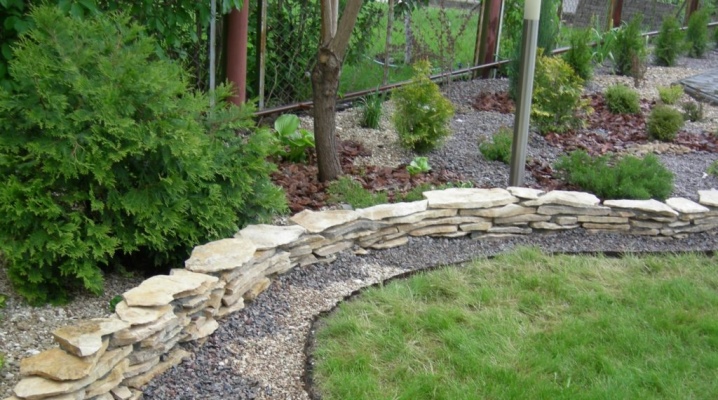
Stone curbs can be a chic decoration for the garden and local area. Both stone curbs with a mesh for a flower bed and garden decorative barriers for paths look good. But it is important to know what their strengths and weaknesses are, how to make them with your own hands.
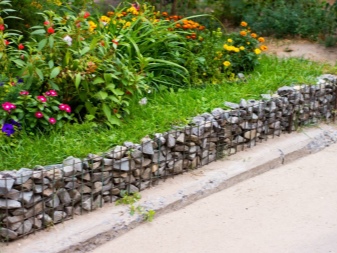
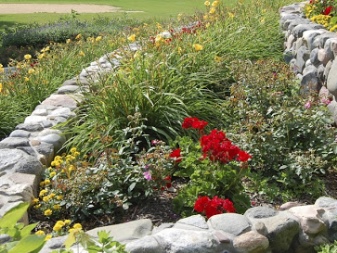
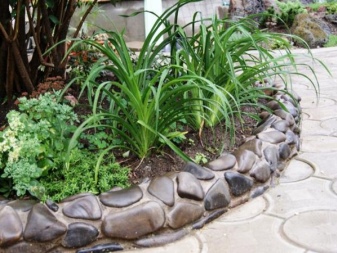
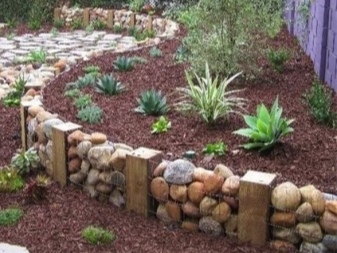
Advantages and disadvantages
The most important thing is that the stone curb is a strong and stable structure. With competent work and good selection of material, it will stand much longer than structures made of wood, plastic or even metal. The stone structures perfectly express the traditional look, blending into the emphatically old-fashioned surroundings. You can also show real originality and flexibly vary the design of the territory. Self-construction of curbs can significantly save money.
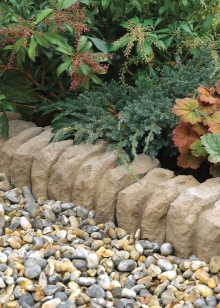
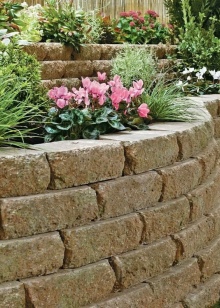
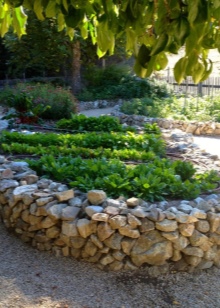
With the right approach to the design of a flower bed or path, even the most nondescript space will look much more interesting.
Another plus is worth noting:
- a wide variety of appearance options (since a wide variety of stone types are applicable);
- mechanical reliability of the fence;
- the possibility of simple processing (when choosing soft limestone, sandstone, tuff);
- environmental safety;
- natural appearance and natural grace.
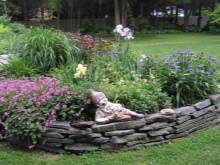
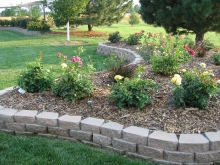
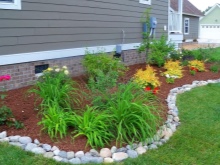
As for the disadvantages, it should be remembered here that:
- the creation of stone curbs requires serious enough efforts to aesthetically work out the project, it is easy to make serious mistakes, but it is much more difficult to fix them than when using wood, metal, plastic;
- the stone is processed rather poorly, the manipulations with it themselves are laborious and time-consuming, in addition, they require great accuracy;
- even the simplest options are relatively expensive.
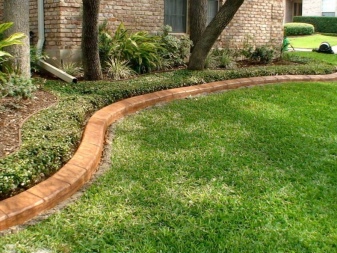

What stones are used?
When creating borders, different types of stone are used.
Basalt
It is quite reasonable to make a garden border for a flower bed or for paths from basalt. This stone looks great. In addition, it is resistant to environmental influences.
Basalt structures strengthen the roadbed and successfully separate it from the normal sidewalk.
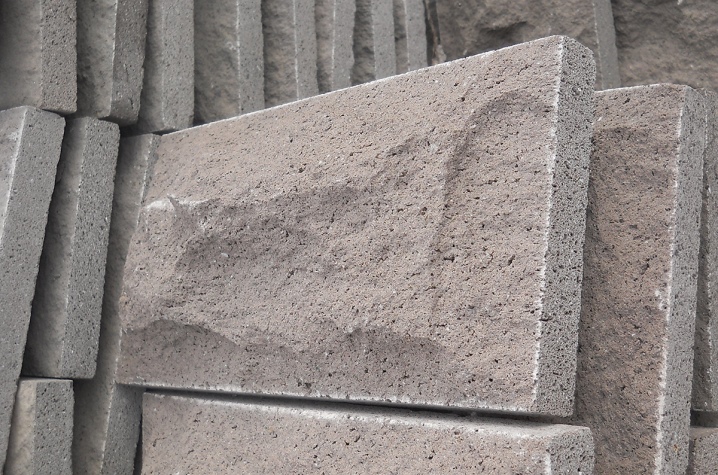
Slate
This is also an excellent way to prepare a stone curb. The peculiar layering gives this natural stone barrier excellent decorative characteristics. Slate fences are strong enough and impervious to water. They retain their original aesthetic qualities for many decades.
Slate is resistant to various chemicals and temperature fluctuations.
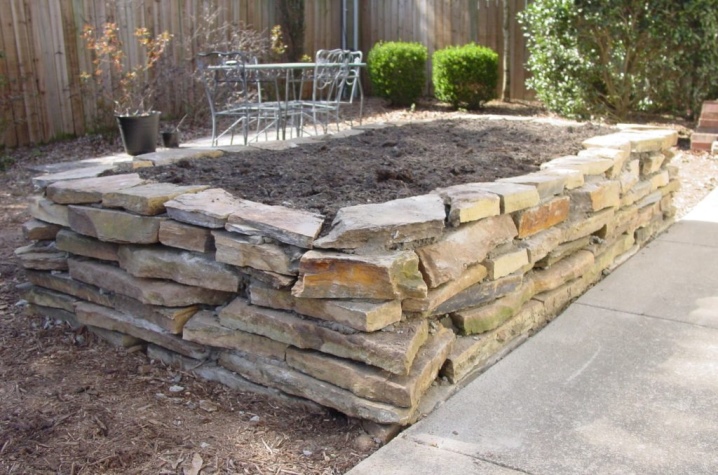
Limestone
This rock has a porous surface. Most often it is characterized by gray, white or cream colors (and its various shades). Natural limestone barriers can be pink or blue in color. But you need to understand that over time, the lime fence will split.
It is possible to prevent or at least weaken the appearance of cracks by saturating the cavities with soil, as well as by using ground cover plants.
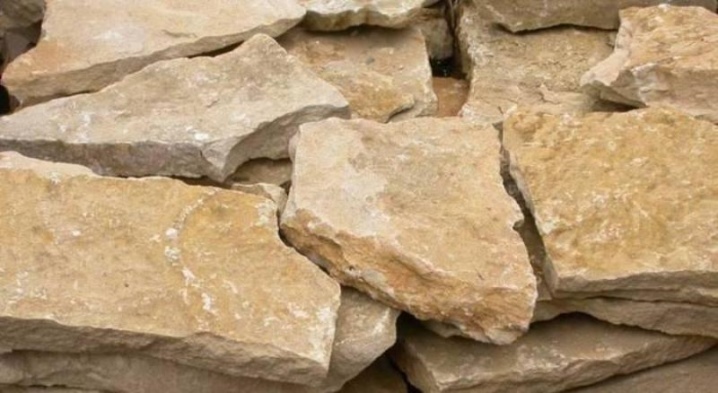
Granite
Wild granite structures are extremely durable. However, one must understand that such designs are not very suitable for garden and garden beds - they adversely affect the acidity of the earth. But in favor of granite structures is evidenced by their high frost resistance, ease of maintenance, high density of material and a variety of colors.
It is worth considering that due to the hardness of granite, it can only be processed using specialized equipment.
There are such varieties:
- sawn;
- polished;
- chipped;
- polished.
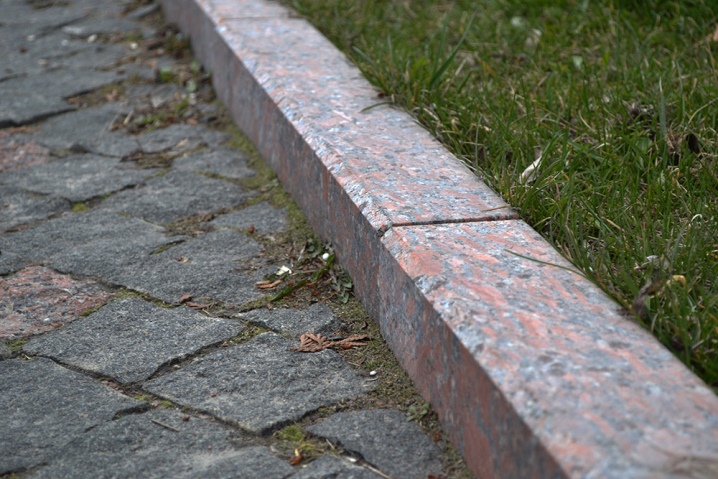
Sandstone
Sandstone curb is not very durable. But it is distinguished by bright colors and excellent air permeability. When using such a stone, it is necessary to take into account its porosity and apply special measures.
And yet, one cannot count on a long service life. Therefore, the option with sandstone should be considered as the last thing.
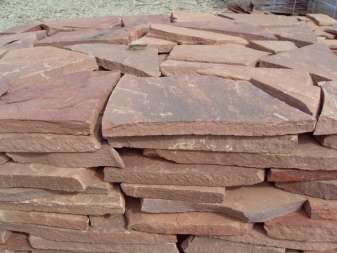
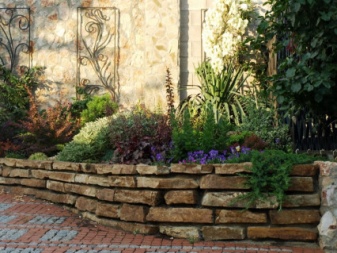
Other
Tuff - that is, a subtype of limestone - is quite promising. Tuff has a variety of shades. It is mechanically strong and relatively easy to work with. Quartzite is praised for its brilliance in sunlight and for its graceful play.
You can equip a border with rubble stone. Dolomite or its other origin is practically irrelevant in practice. But at the same time, only clean material is used for construction, free from any blockages and defects. The size of the blocks ranges from 7.5 to 3.5 cm.
The best prospects are opened by the use of decorative rubble stone, but working with it requires experience and accuracy.
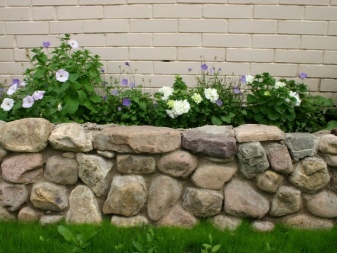
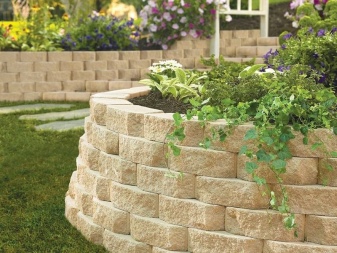
DIY installation features
Before making a stone curb, you need to figure out what types of it exist and which one is best used in a particular case. Of key importance here is the specificity of flower beds and flower beds, the peculiarities of cultivated plants. Of the greatest decorative value are relatively low curbs obtained from affordable, practical material. Quite often, gabions are prepared from the grid, filling them then:
- the actual stone;
- rubble;
- river and sea pebbles.
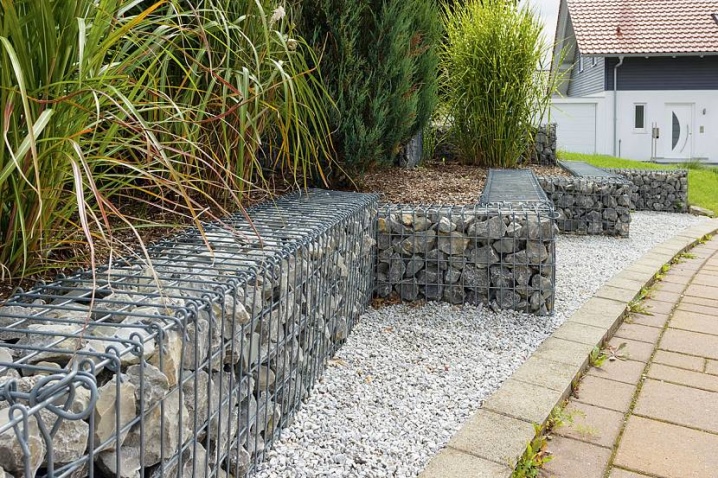
This method is suitable for the formation of even complex multi-level flower beds. Gabions can be filled to varying degrees, moreover, their independent production and construction is allowed. The gabion construction is very durable and looks attractive. However, the negative side will be the need to use a special mesh and the need to strictly follow the technology for obtaining the structure.
A good alternative can be considered the construction of a curb made of cement (or rather, from concrete mortar).
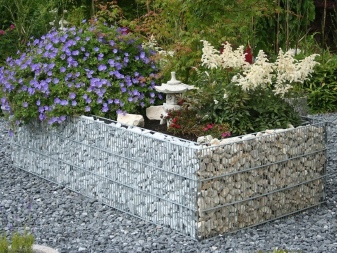
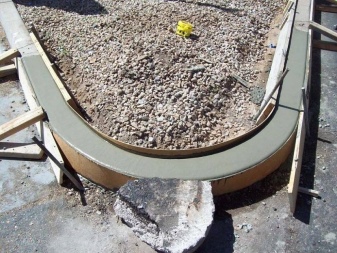
Step-by-step instructions for creating a stone fence will help you do everything right. But by the beginning of work, you should stock up on:
- natural stone or concrete blocks;
- bayonet and shovel;
- stakes;
- rope;
- construction tape;
- wooden mallet;
- cement mortar.
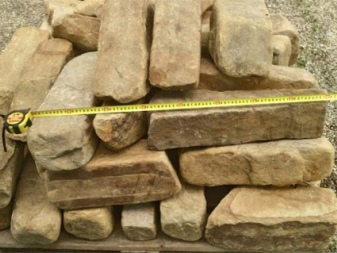
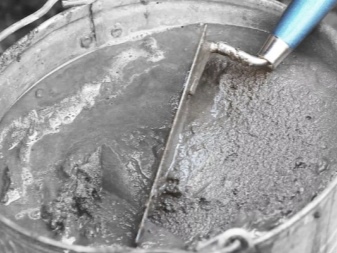
All garbage and unnecessary plants are removed from the selected area, the contours of the path, flower beds are marked. When the rope is stretched between the stakes, the sod is removed with a bayonet shovel, along with a few centimeters of the substrate, exactly according to the marking. This will allow you to organize a light foundation for the curb.
An open trench is filled with a gravel-sand cushion. After that, a relatively low formwork is made, reinforcement rods are mounted and a cement mortar is poured. As soon as the foundation hardens, the formwork is removed. At this point, you can begin to lay out the border itself. All its parts are fixed to cement mortar.
Having completed this stage, you need to design the flower bed itself, but the path must be done before creating the border.
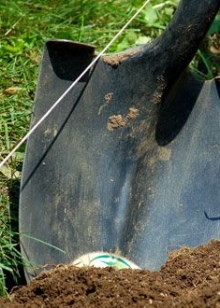
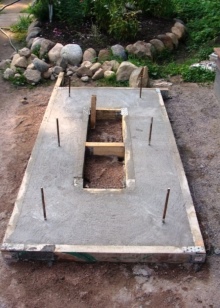
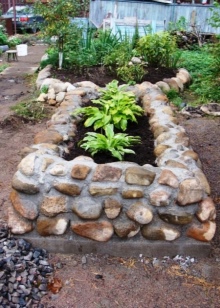
Beautiful examples
A few examples will help you understand what the finished border will look like.
- This is how one of the options might look like. The accentuated unevenness of the execution only gives the structure a special external charm.
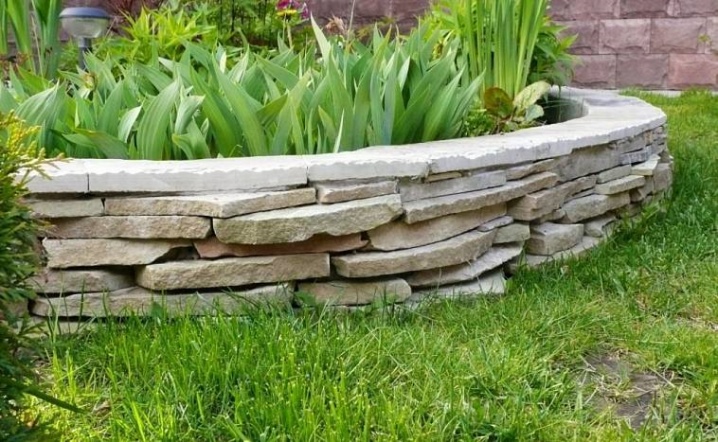
- A very low bulk white stone curb can also be an attractive solution.
Behind the seeming randomness of the layout of individual stones, there is a strict, well-thought-out scheme.
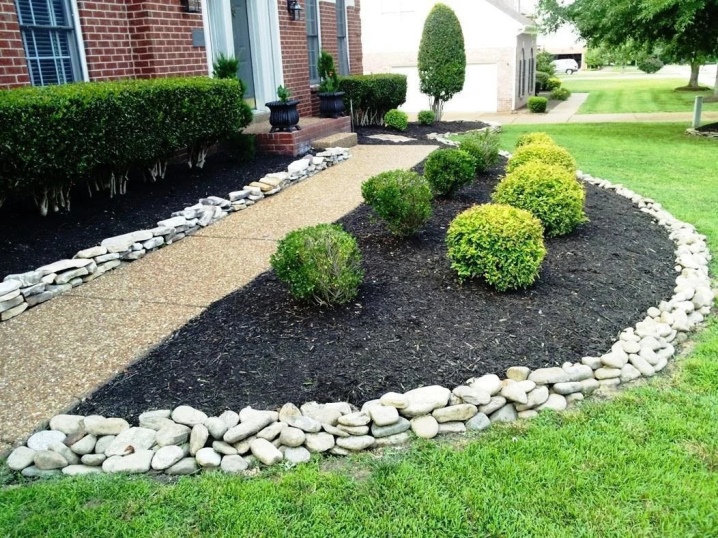
- No matter how strange it may sound, even round concrete blocks can be quite an attractive solution in some cases.
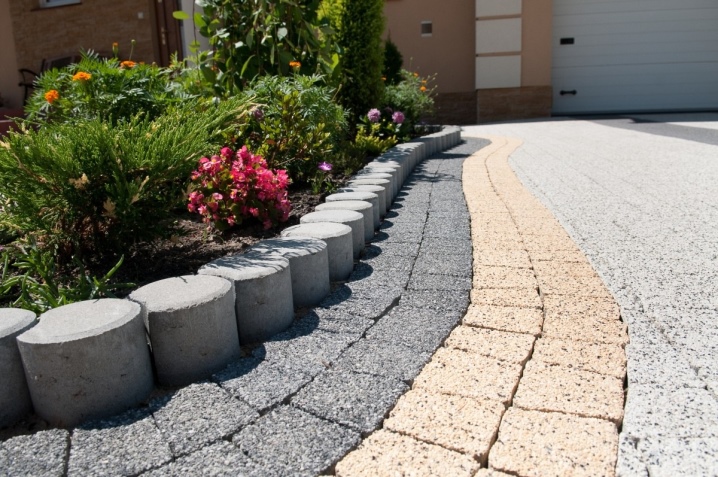
For information on how to make a stone border, see the next video.



































































The comment was sent successfully.